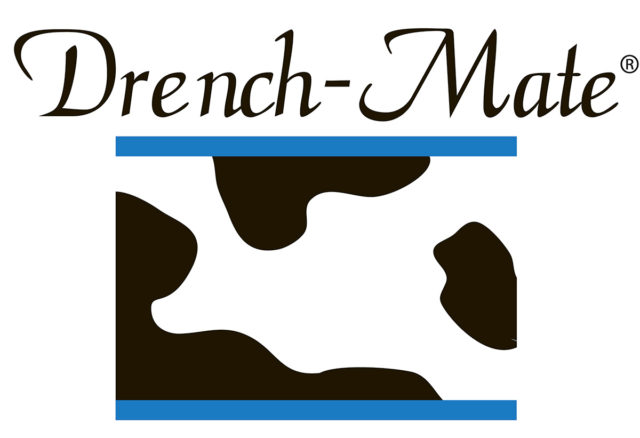This is a very pivotal time for U.S. dairy. People want to know more about the foods they eat. We have a great story to share – but only if we seize the opportunity to connect consumers with dairy farmers and the broader industry and do so with full transparency.
The Innovation Center for U.S. Dairy, created by dairy farmers in 2008 through the dairy checkoff, provides an important avenue to make this happen. The Innovation Center brings together dairy farmers, cooperative leaders and other organizations with dairy companies to address issues and realize opportunities that no one entity can face alone.

Some of the industry’s most influential organizations and companies are Innovation Center board members, and they are committed at the highest levels across the value chain. Twenty-nine CEOs and chairmen are board members; 16 represent farmer-owned/led organizations.
Since its inception, about 450 companies and 1,000 individuals have been part of the Innovation Center’s work, proving the dairy community can work together with success, including:
-
Traceability: 27 processors, accounting for approximately 80 percent of U.S. milk production, have committed to adopt voluntary best practices for enhanced traceability.
-
Food safety: Developed curriculum and trained more than 2,400 industry professionals in best-in-class pathogen control techniques.
- Sustainability: Created critical life-cycle assessment to understand the carbon footprint of a gallon of milk. The Innovation Center also hosts an awards program that highlights best sustainability practices throughout the value chain.
These accomplishments and many others have made an important difference to the industry.
Changing marketplace
Now the Innovation Center has expanded its collective focus to create and implement a strategic plan to build long-term trust in dairy.
This work is unprecedented, and it required all of us to first take an internal look at ourselves. We talked to farmers and companies across the industry and realized we are a well-established, large category that is trusted, but we cannot rest on our laurels.
We knew we needed to better understand our consumers and what matters to them, so the Innovation Center gathered insights through a variety of research tools and third-party sources. One constant takeaway is people want to purchase food from companies/people they know operate in a way consistent with their values and expectations.
They are holding all of us responsible – from the farm to the processing plant to the grocery store – for transparency about how their food is produced.
The Innovation Center plan provides a unifying framework to successfully position U.S. dairy in a rapidly changing marketplace. The board recognizes this is our opportunity to be more united and open. Let’s be bold and move outside of our comfort zones as we work to build trust by transparently telling our story.
Trust is critical to sales. We’ve always known price and taste drive sales, and they still do. But trust and emotions about food – or feeling good about an industry or a company that produces food – is equally important to people. “Is the farm good to its animals and employees? Are dairy manufacturers doing the right thing environmentally?”
For decades, our industry has relied on science to affirm dairy foods are nutritious and offer an abundance of health benefits, but even science is not immune to consumer scrutiny. People read conflicting studies. They are left asking, “Who should I trust?” and often turn to people who are just like them for information.
Other insights guiding our strategy include:
- People are skeptical of big business and the government.
- America’s population is more diverse, and family structures are different.
- People are less linked to rural or farming communities.
- Technology has made news and information gathering instantaneous.
- People are more engaged with food, reflected in the rise of cooking classes, more farmers’ markets and popular cooking networks/shows.
- Safe and healthy food definitions have evolved to include on-farm practices.
Collective action, unified voice
The dairy community has a proud heritage and commitment to continuous improvement on farms, in plants and across the value chain. Let’s ensure we are meeting the needs of consumers by proactively demonstrating that we live by our values. Let’s be authentically transparent about who we are and how we produce our products, on every topic.
We’ve already seen how telling our sustainability story through the life-cycle assessment of a gallon of milk set the record straight on dairy’s environmental footprint.
This isn’t about mass advertising, and it’s not a campaign with a start and stop date. It’s about making storytelling an everyday part of our culture, and it may look different for every company and farm. It means using social media channels as well as traditional media.
It means more farm and company tours. It means people across the industry engaging more with their communities.
It’s going to take the entire category: farmers and their employees, national and local checkoff staffs, people in the processing plants and their executives, co-op leaders and communicators. It’s going to take everyone following a call to action to let consumers know who we are, what we stand for and how we work.
It’s about creating as comprehensive a communications outreach effort as can be imagined – one that allows for all of our participation. It’s up to all of us to act as dairy’s stewards. We must define our values and not let others define them for us.
We have the ability to leverage the strength of our collective voice. When that happens, everyone along dairy’s value chain will benefit, and our future will become more secure. ![]()
Your Dairy Checkoff in Action – The following update is provided by Dairy Management Inc. (DMI), which manages the national dairy checkoff program on behalf of America’s dairy producers and dairy importers. DMI is the domestic and international planning and management organization responsible for increasing sales of and demand for dairy products and ingredients.

-
Barbara O’Brien
- President
- Innovation Center for U.S. Dairy and Dairy Management Inc.
- Email Barbara O’Brien






